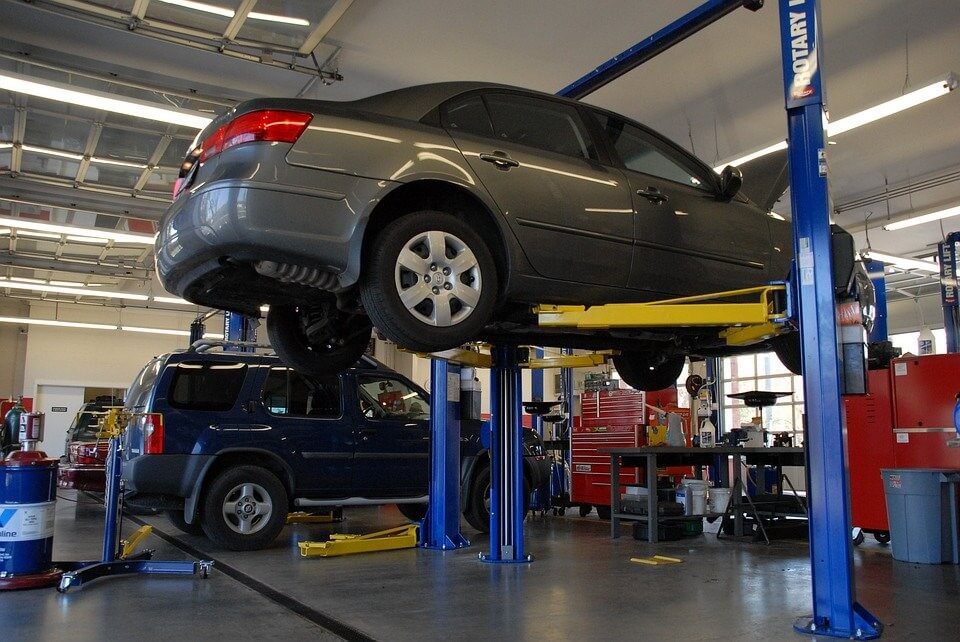The Hidden Dangers of Poor Air Quality in Your Car Workshop

Beneath the buzz of impact wrenches and the sparkle of polished chrome in car workshops lurks an invisible adversary.
At first glance, you might think that this enemy is hidden in the sharp edges of the numerous machines operating in these environments, or that the sparks from bodywork are the most severe threats. But no, these are not the main dangers present in mechanical workshops. The threat is far more insidious, a silent foe that can slip unnoticed past our defences until its effects are deeply felt. This adversary is the air itself.
Opening the windows and naturally increasing the ventilation of the space may be well-intentioned actions, but they do not eliminate the problem. In a workshop, there are so many pieces of equipment emitting polluting gases, including those gases emitted by vehicles themselves, that more decisive action is needed. Discover the hidden dangers of poor air quality in your car workshop now.
The Risks Associated With Inadequate Air Conditions
Due to the nature of their work, workshops are prone to accumulating dangerous pollutants, including vehicle exhaust fumes, chemicals from paints and solvents, dust from sanding and grinding, and even asbestos from older vehicle parts.
These facilities are often compact, enclosed spaces where vehicles are driven in for maintenance, diagnostics, or repairs. The process requires running cars and buses indoors as part of various procedures, whether conducting an MOT, identifying problems, or carrying out repairs. Unfortunately, when a vehicle is running, it emits several toxic substances, including but not limited to carbon monoxide, nitrogen oxides, particulate matter, volatile organic compounds, sulphur dioxide, and benzene. Understanding these dangers is crucial for implementing effective measures to mitigate them.
Health Hazards
Respiratory Problems: Prolonged exposure to dust and chemical fumes can lead to chronic respiratory issues such as asthma, bronchitis, and even lung cancer in severe cases. Workshop workers are at a higher risk due to constant exposure to these conditions.Skin and Eye Irritation: Chemicals found in paints, solvents, and other materials can cause dermatitis, burns, and other skin conditions. Eye irritation and damage can also occur from exposure to these chemicals or particulate matter in the air.Neurological Effects: Solvents and other volatile organic compounds (VOCs) commonly used in car workshops can harm the nervous system, leading to symptoms such as headaches, dizziness, nausea, and, in severe cases, chronic neurological disorders.
Safety Issues
Fire and Explosion Risks: The accumulation of flammable gases and chemicals creates a significant risk of fires and explosions in improperly ventilated or maintained workshops. This endangers lives and can also cause extensive property damage.Reduced Visibility: Dust and fumes can significantly reduce visibility within the workshop, increasing the risk of accidents and injuries, particularly when operating heavy machinery or working with dangerous equipment.
How to Reduce the Risk in Your Workshop
Despite all the risks, working in a workshop can be relatively safe. However, some precautions are necessary to achieve this.
Improving ventilation is a crucial step; this includes keeping windows open for natural air circulation and investing in workshop extraction systems to remove harmful pollutants directly from the work area.
Using emission capture systems, such as local exhaust ventilation (LEV) at emission generation points, further ensures pollutants are captured before spreading. There are several types of LEV systems, including exhaust hose reels, extraction arms, portable systems, nozzles, and exhaust hoses.
Moreover, heating, ventilation, and air conditioning (HVAC) systems also contribute significantly. Unlike local exhaust ventilation systems, which are designed to remove hazardous substances from specific points, HVAC systems regulate the overall air quality, temperature, and humidity levels throughout an entire space.
Maintaining vehicles and equipment in good working order also minimises emissions, while limiting engine running times and avoiding unnecessary idling can significantly reduce the release of pollutants indoors. Providing workers with personal protective equipment (PPE), like respirators or masks that filter out particulate matter and toxic gases, is crucial.
Educating staff about the risks of air pollution, the proper use of protective equipment, and best practices for minimising exposure enhances overall workplace safety. Monitoring air quality regularly helps identify high levels of pollutants, and investing in air quality monitoring devices offers real-time data for better management.
Establishing safe work practices, including designated areas for running vehicles and specific procedures for handling chemicals, alongside maintaining cleanliness to prevent the accumulation of dust and chemical residues, enables a more comfortable and safe working environment for all.
Ensuring the health and safety of your employees is more than a legal obligation; it is, above all, a demonstration of commitment to the well-being of your team. Recognising the risks and acting immediately to neutralise them increases team satisfaction, customer admiration, and facilitates talent retention.






